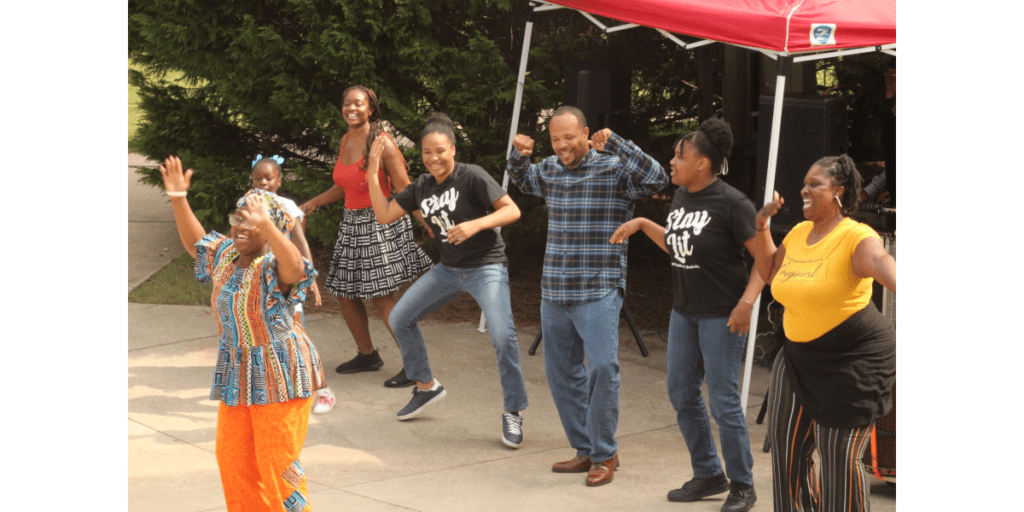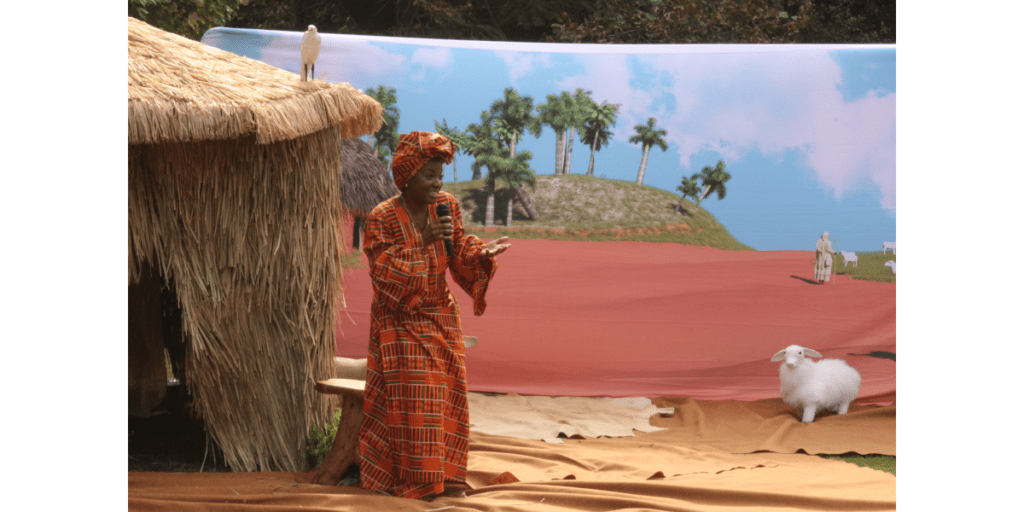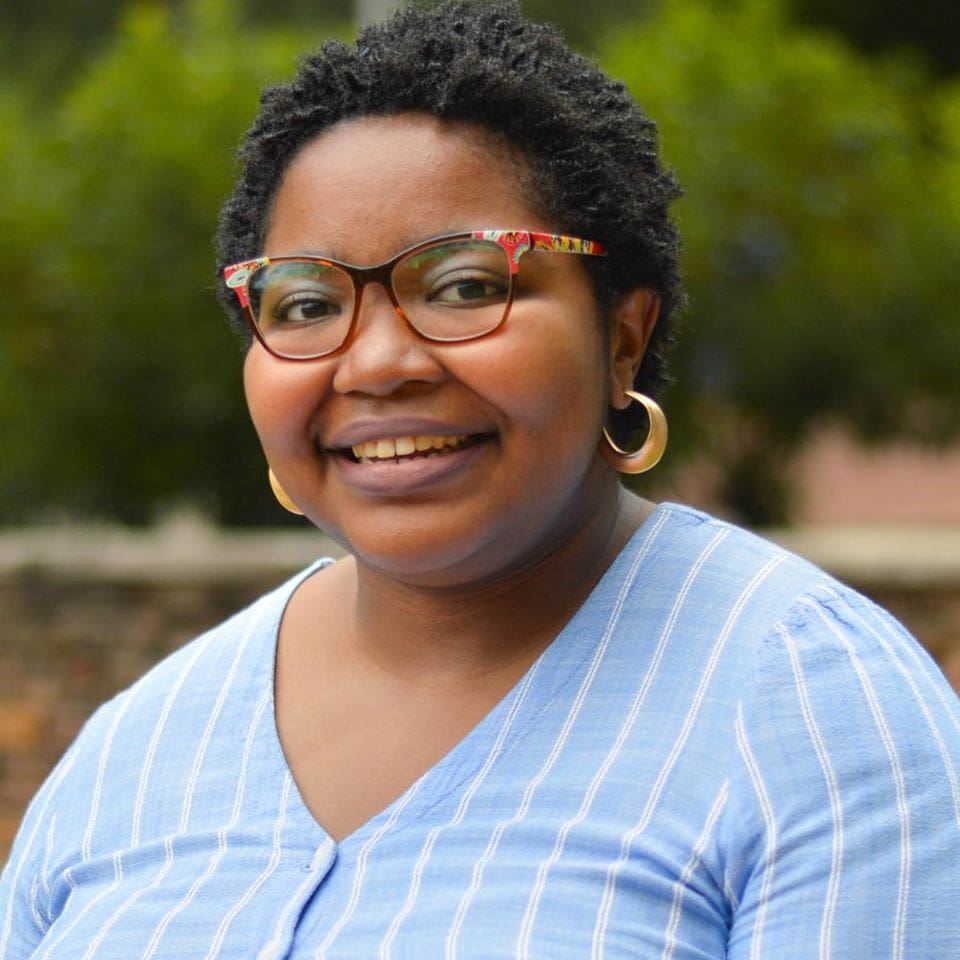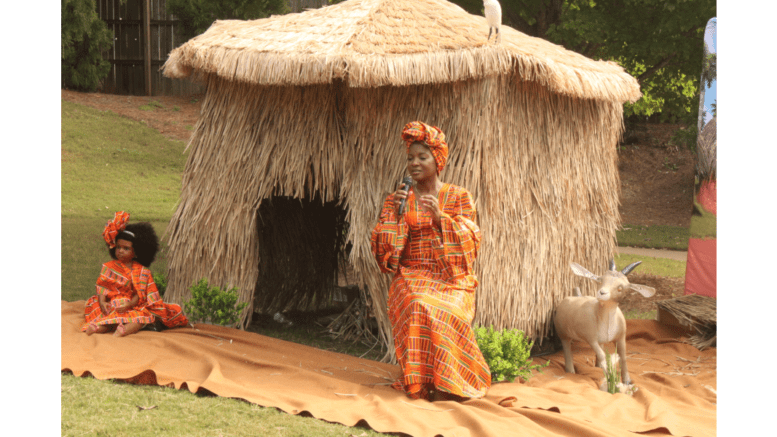By Arielle Robinson
The Before Slavery museum hosted the Sankofa Festival Sunday at Taylor-Brawner Park in Smyrna, where they presented a portion of the upcoming museum.
An Ashanti princess donned in kente cloth guided visitors to a replica of a West African village.
Once there, she explained that her native language was Twi, from modern-day Ghana.
She sat in front of a hut surrounded by a fake goat and lamb, with a backdrop of sand, a hill, and some trees, and discussed her village’s cultural background.
“Some of our produce includes plantains, bananas, cassava, cocoyam,” the woman said. “We observe those entities that are rooted in the Old Testament and we have animal sacrifices for our sins. We also observe what is prescribed in the Old Testament as it relates to marriage.
“For example, my father will sign a contract with my husband to be and the husband will pay the bride price and if I am agreeable, at a time that is undisclosed, my husband-to-be will knock on the door of my family home. If I am agreeable to the marriage I will answer the door.”
The woman also said her village observes the feasts of the Old Testament as originally practiced.
“I could tell you so much of my country, but you don’t have time to sit here and listen to me all day,” she said. “But I do want to tell you, there is an upheaval we are hearing about and some of my Ashanti relatives and friends are disappearing and we do not know what is going on. So please, be vigilant, be careful.”
The woman who played the Ashanti princess was revealed to be an actress named Lakisha Smith.
As explained in a previous article about the upcoming Before Slavery museum, there will be interactive demonstrations like the aforementioned along with replicas of West African villages before slavery and colonialism.
Sunday’s Sankofa Festival acted as a fundraiser for the museum, which will be near The Battery and Truist Park.
“Sankofa” is an Akan word in the Twi language which means to retrieve something from the past.
The museum will explore what life was like for various West African ethnic groups before the transatlantic slave trade occurred. It will explore aspects such as culture, food, writing systems, and much more. Read this article from the Courier to learn more about the museum.
Cobb County Commissioner Jerica Richardson was present at the festival, where she presented proclamations on behalf of the Cobb Board of Commissioners to dignitaries from various West African countries.
The festival was full of vendors and entertainment, among them Milkshake Mayfield and the Uhuru Dancers.
The latter is the longest-standing West African dance company in the metro area.
They first performed a dance called diansa, which is part of a rhythm called lamban, from the western part of the continent.
A dancer explained that the dance is to honor the griot.
“[Griots] are the historians of our families, of our lineage, and they pass down oral traditions, which you’re supposed to do in life, and they are the keepers of our history,” she said.
The dancers then performed a dance from Mali called madan, which is performed at the end of Ramadan festivities.
They also performed the Guinean dance kuku.
“The women of the village go off fishing for their families back at the village, and when we get back to the village with everything that we caught, we have a big celebration,” a second dancer said, explaining the dance.
The dancers engaged the audience in a call and response chant and then proceeded to invite audience members to dance with them.
The dancers ended the show by dancing the kuku with children, teenagers, and adults from the audience. They then danced by themselves to close out their performance.
Below are some pictures of the West African village and Uhuru Dancers (all photos by Arielle Robinson):





Arielle Robinson is a student at Kennesaw State University. She also freelances for the Atlanta-Journal Constitution and is the former president of KSU’s chapter of the Society of Professional Journalists as well as a former CNN intern. She enjoys music, reading, and live shows.
